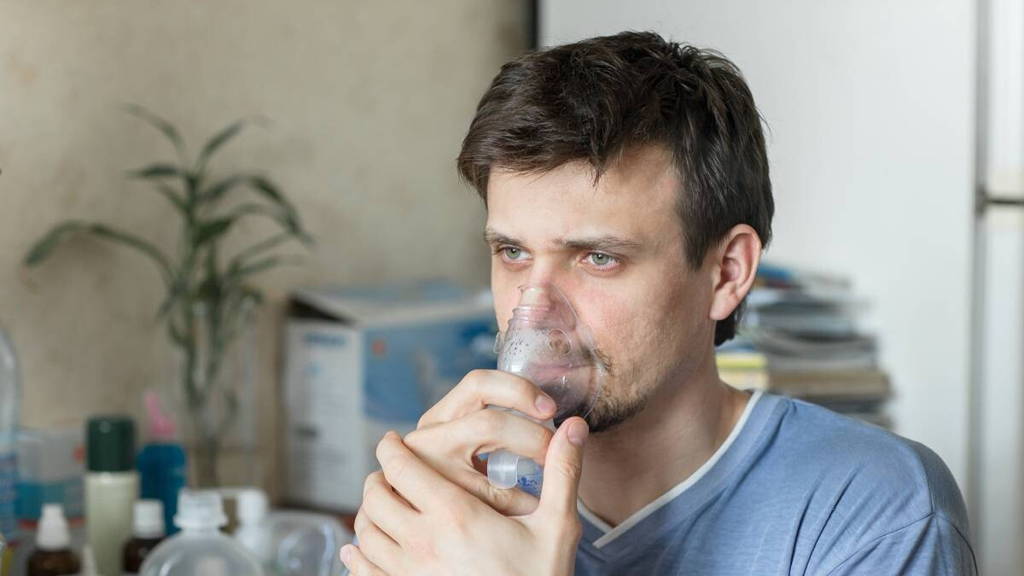At the LUMC, PhD student Atena Mahboubian is conducting a study on the use of e-health to recognize COPD lung attacks earlier so they can be prevented. A year ago, LUMC received a €600,000 grant from the European Commission for this purpose (Horizon-EIC Pathfinder). Within the project, a real-time home monitoring solution is being developed. The goal is to use a device for this that can recognize biomarkers for a lung attack in breathing air even before there are symptoms.
Collaborations on the development of the device for this include the Leiden start-up RespiQ and the Norwegian company SINTEF. This is taking place within the European Breath-Sense project. Predicting a lung attack is currently still very difficult. According to the doctoral student, there is currently no specific system for this. “The best predictor is the number of exacerbations someone has had before. That increases the risk of the next exacerbation, but it is never known exactly if and when it will occur. And moreover, it is not clear to many patients exactly what a lung attack is. Sometimes a person watches the situation for a while because incipient symptoms can also be a cold,” says Atena Mahboubian.
Detecting biomarkers in exhaled air
Several patients and healthcare providers have already been interviewed for the project. The aim is to form a picture of the COPD care processes, hear experiences about the existing apps for COPD patients and the wishes regarding the new analysis device. “We are looking more broadly than just at the device: the interviews provide a lot of relevant information about COPD care and home monitoring in general. In the next phase, we want to start processing all the information practically into possibly a prototype of the analysis device. With patients and care staff, we are going to have interactive sessions with also a designer who can immediately visualize ideas,” Mahboubian said.
The device being developed is intended to detect certain biomarkers in exhaled air that may indicate an upcoming lung attack. This specifically involves the number of biomarkers in the breath air and their relationship to each other. The research is still in its early stages. “What biomarkers are released at all when breathing? Which ones are present before and after a lung attack? What are significant values of these? These are questions that are being investigated and about which data are now being collected. A lot of data is needed, of course, because there are many differences between patients. Also, in terms of, for example, medication use and smoking, both of which affect breathing air. The idea is to use artificial intelligence in a later phase to find connections.”
Home monitoring of COPD patients is already being used at several hospitals in the Netherlands. Earlier this year it was announced that the St. Antonius Hospital in Utrecht and Nieuwegein will investigate whether it can also monitor COPD patients of general practitioners. About 100 patients from 10 to 15 general practitioner practices will participate in that study, in collaboration with the UMC Utrecht and Julius Center.
Adding to existing COPD care
The new device being developed within the Breath-Sense study should allow COPD patients to be monitored in an easy way at home. Patients blow into the device and are immediately shown whether a COPD attack is imminent. With that information, caregivers can then ensure that the attack is prevented.
The development also considers the wants and needs of all users. Initially, these are the patients, but also nurses, pulmonologists and general practitioners or practice supporters. The LUMC researchers focus on fitting the future detection method into existing care processes surrounding COPD patients.
Long-term project
In addition to the companies mentioned, the LUMC is also collaborating within the project with King's College London hospital, where interviews with users are also taking place on a smaller scale and the COPD care process is being analyzed.
The idea of analyzing exhaled air for disease detection, think of the e-Nose for example, is not new. However, a large-scale application of this technology is not there yet. Mahboubian is hopeful that breath analysis will one day become practice. “Unfortunately, the development of a reliable product takes many years. With our research, we want to help ensure that a possible future analysis device fits the wishes and needs of users and healthcare processes. It will probably take another 5 to 10 years, but I believe it is possible and that it will come.”






